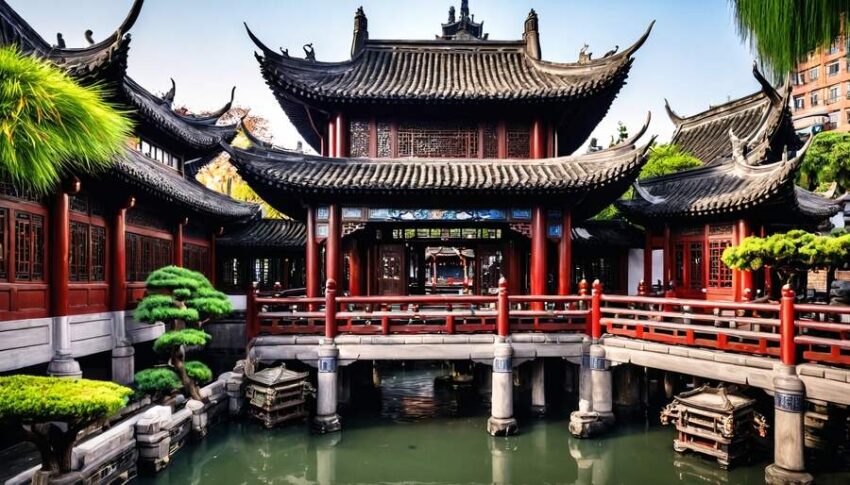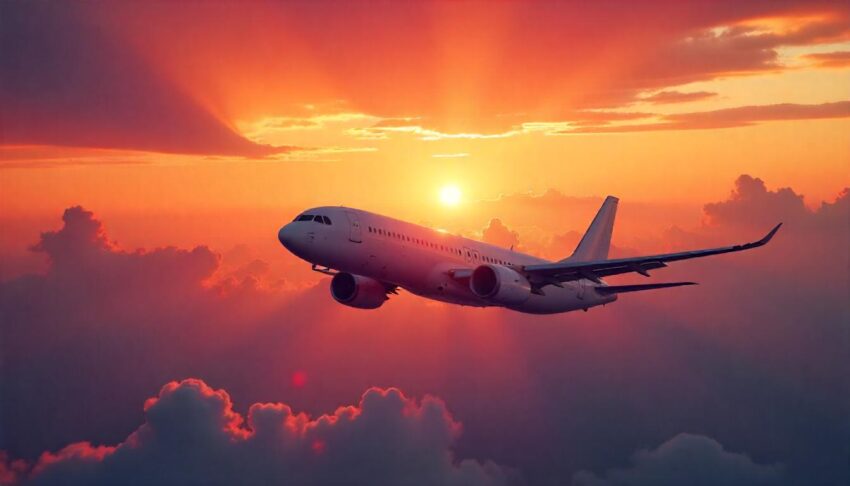- by foxnews
- 04 Feb 2025
China Surging Tourism Sector by Linking Asia and Europe for Leisure and Business Travel
China is ambitiously aiming to become a global powerhouse in the travel and tourism sector by revolutionizing how people journey across continents, whether for leisure or business travel. The country is focused on making travel more accessible and affordable, offering budget travel options that cater to a wide range of tourists. By lowering barriers and creating a seamless, cost-effective experience, China is attracting travelers who are seeking easy and cheap trips. With strategic visa-free policies, China is connecting key cities like Chongqing, Chengdu, and Xi'an with major European hubs such as Duisburg, Hamburg, and Madrid, as well as crucial transit points in Kazakhstan, Russia, Belarus, and Poland.
- by travelandtourworld
- 22 Aug 2024
- in travel

China is ambitiously aiming to become a global powerhouse in the travel and tourism sector by revolutionizing how people journey across continents, whether for leisure or business travel. The country is focused on making travel more accessible and affordable, offering budget travel options that cater to a wide range of tourists. By lowering barriers and creating a seamless, cost-effective experience, China is attracting travelers who are seeking easy and cheap trips. With strategic visa-free policies, China is connecting key cities like Chongqing, Chengdu, and Xi'an with major European hubs such as Duisburg, Hamburg, and Madrid, as well as crucial transit points in Kazakhstan, Russia, Belarus, and Poland.
These connections are fostering a new era of global connectivity, linking Asia to Europe through routes like the Belgrade-Budapest Railway and the high-speed rail links between Moscow and Beijing, Harbin and Manzhouli, and Zima and Krymsk. Additionally, the China-Laos Railway, connecting Kunming to Vientiane, further enhances regional accessibility. China's efforts are not only boosting tourism but also driving international commerce, drawing visitors from around the world to explore and engage with a diverse array of destinations. By enhancing its travel infrastructure and policies, China is solidifying its position as a central hub in the global travel industry, setting new standards for international travel while significantly expanding its influence on the world stage.
By expanding markets and increasing interdependence, the initiative is not only enhancing China's economic and political influence but also creating opportunities for travelers to explore emerging destinations and experience the rich diversity along these new routes. As China builds a high-tech economy, the BRI is paving the way for a new era of travel, where global connectivity and cultural discovery are at the forefront.
This newly launched route of the China-Europe Railway Express establishes the first direct rail connection between the Beijing-Tianjin-Hebei region and Serbia. The extensive railway network links 120 Chinese cities with 219 cities across 25 European nations, making it a crucial transportation link between China and Europe.
For tourists, the China-Europe Railway Express offers a unique, scenic alternative to air travel, providing an opportunity to explore the vast and diverse landscapes of Eurasia. Adventure and cultural tourists from both China and Europe are drawn to the route, which passes through regions rich in history and natural beauty. The European Travel Commission has highlighted the potential of this route to attract a new wave of travelers seeking immersive, land-based travel experiences.
Furthermore, the China-Europe Railway Express has emerged as a major alternative to air travel, offering a scenic and environmentally friendly route across Eurasia. This rail network not only facilitates tourism but also deepens economic ties between China and Europe, promoting more business travel and cultural exchange.
The China-Russia High-Speed Railway is a landmark initiative aimed at establishing a direct, rapid connection between Moscow and Beijing, with key stops in Harbin and Manzhouli in China, as well as Zima and Krymsk in Russia. This high-speed rail line will significantly reduce travel time between the two capitals, making it a swift and efficient route for all types of travelers. Whether for business or leisure, this ambitious project is set to enhance connectivity between Asia and Europe, further solidifying China's role as a global leader in the travel and tourism sector. By bridging vast distances with unprecedented speed, the China-Russia High-Speed Railway will not only facilitate easier travel but also strengthen economic ties and cultural exchanges between the two nations, paving the way for a new era of international cooperation and exploration.
Russia and China have a long history of political and economic collaboration, and this railway project is set to deepen that relationship. The Russian Federal Agency for Tourism predicts that the high-speed railway will significantly boost tourism between the two countries. The route is expected to attract a diverse range of travelers, including those interested in exploring the rich cultural and historical ties between Russia and China, as well as adventure tourists seeking to experience the vast Siberian wilderness.
The China-Laos Railway, a flagship project under the Belt and Road Initiative (BRI), is a monumental achievement in connecting China with Southeast Asia.
This railway not only facilitates easier travel for Chinese tourists but also positions Laos as a strategic transit hub for travelers heading further into Southeast Asia. The impact on local economies is profound, with increased tourism leading to job creation, infrastructure development, and greater international exposure for Laos.
A vast rail network is gradually emerging across Central Asia, driven by the desire to avoid geopolitical flashpoints like Russia and the Red Sea.
Last month, China, Uzbekistan, and Kyrgyzstan formalized an agreement to develop a railway linking the three nations, with construction expected to start in October.
The successful development and implementation of maglev hyperloop technology in China could have far-reaching implications for the global travel industry. This technology has the potential to transform long-distance travel, making it faster, more efficient, and less reliant on traditional air travel.
Understanding Visa Regulations: A Key Travel Consideration
While China's expanded travel routes and visa-free policies are enhancing global connectivity, travelers must remain aware of the complexities surrounding visa regulations and entry requirements. Possessing a visa does not guarantee entry at a border or airport, as several countries maintain strict entry controls.
Visa-Free Policies: Welcoming the World to China
Currently, China offers visa-free entry to citizens of over 60 countries, including several from Europe and Asia. For instance, citizens of Singapore, Japan, and Brunei can enter China for up to 15 days without a visa. Additionally, China has implemented a 72-hour visa-free transit policy for citizens of over 50 countries, including the United States, Canada, and EU nations, when transiting through major cities like Beijing, Shanghai, and Guangzhou.
Furthermore, the 144-hour visa-free transit policy is particularly advantageous for tourists on cruise or rail journeys passing through China. By making entry more accessible for a large number of countries, China has simplified the travel process for international tourists, giving a boost to its tourism industry.
Cruise Tourism: Charting New Courses for Global Connectivity
China is making significant strides in developing its cruise tourism industry, recognizing its potential to attract international visitors and enhance global connectivity. The Chinese government has heavily invested in building state-of-the-art cruise terminals and expanding cruise routes that link China with other regions in Asia and beyond.
Shanghai has emerged as a major hub for cruise tourism, serving as the departure point for several international cruise lines. The Shanghai Port International Cruise Terminal ranks among the busiest in Asia, offering routes to popular destinations such as Japan, South Korea, and Southeast Asia. The Chinese government is also focusing on launching new cruise routes tailored to international tourists. A prime example is the South China Sea Cruise Route, which includes stops at renowned destinations like Hong Kong, Vietnam, and the Philippines, gaining traction among global travelers.
Government Support and Strategic Initiatives for Cruise Tourism
The Chinese government has identified cruise tourism as a key driver of economic growth and has implemented several policies to support its development:
Through these initiatives, China is positioning itself as a major player in the global cruise tourism market, further integrating itself into the global travel network and boosting its influence in the tourism industry.
As the BRI continues to grow, it is also extending into regions like Latin America and Western Europe, where major players such as Argentina, Brazil, and Spain are being courted to join. The initiative's impact on global travel is already significant, with new routes and infrastructure projects making far-flung destinations more accessible and attractive to tourists.
Beijing, the vibrant capital of China, is a city where ancient history meets modern innovation, offering visitors a unique blend of cultural heritage and contemporary attractions. As you explore this dynamic metropolis, you'll encounter breathtaking temples, serene parks, and cutting-edge art districts that tell the story of China's rich past and exciting future. Here are some of the must-see attractions that should be on every traveler's itinerary.
Lama TempleThe Lama Temple, originally a princely residence, was converted into a lamasery in the 18th century and has since become one of Beijing's most revered spiritual sites. As you wander through its series of increasingly divine halls, the air thick with incense and the sound of prayer wheels turning, you'll be drawn to its awe-inspiring finale: an 18-meter-high Buddha statue carved from a single trunk of Tibetan sandalwood. This spiritual journey is as much about admiring the temple's intricate architecture and sacred relics as it is about experiencing the peaceful ambiance that permeates its halls and courtyards.
Novotel Beijing PeaceIn the heart of Beijing, near the iconic Wangfujing shopping district, Novotel Beijing Peace provides a perfect blend of comfort and convenience. This renowned four-star hotel offers modern amenities and is just a stone's throw away from major cultural landmarks like the Forbidden City and Tiananmen Square, making it an excellent choice for both business and leisure travelers.
The PuXuan Hotel and SpaFor a serene and sophisticated retreat, The PuXuan Hotel and Spa offers a blend of contemporary design and traditional Chinese aesthetics. Located near the historic Forbidden City and the bustling Wangfujing shopping district, this luxury hotel is renowned for its personalized service, elegant accommodations, and its commitment to showcasing Chinese culture through art and decor.
- by foxnews
- descember 09, 2016
Travelers flock to top religious landmarks deemed 'most Instagrammable'
Travelers visiting religious landmarks across the world may see a photo opportunity that's worthy to share on social media. Here are 10 popular spots, plus some attractions in the U.S.
read more




